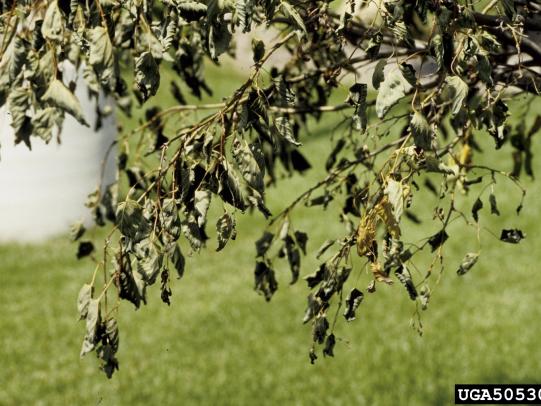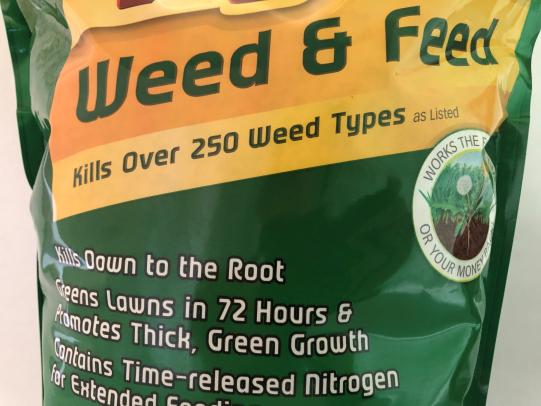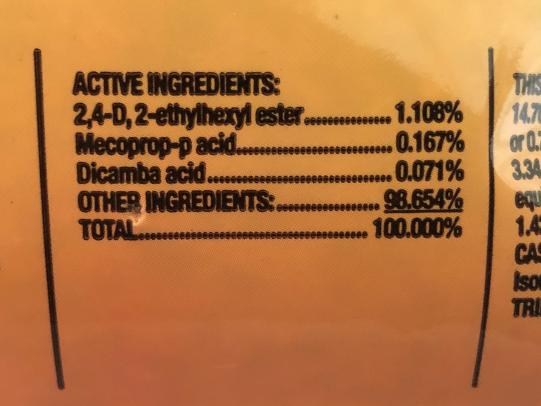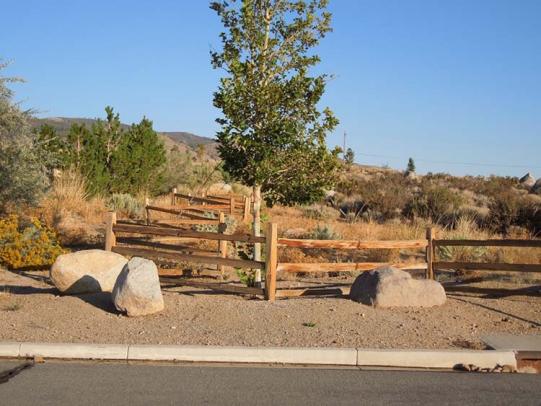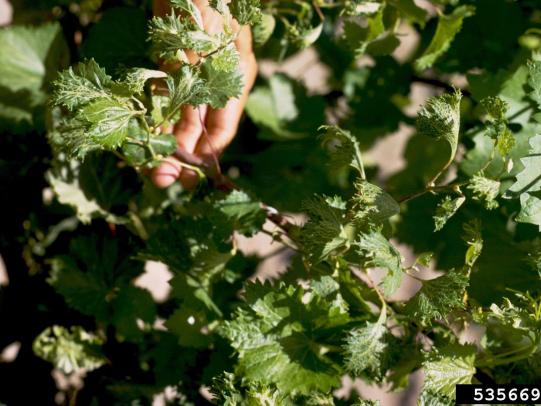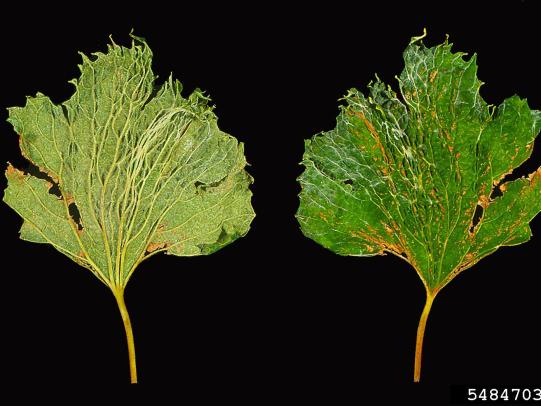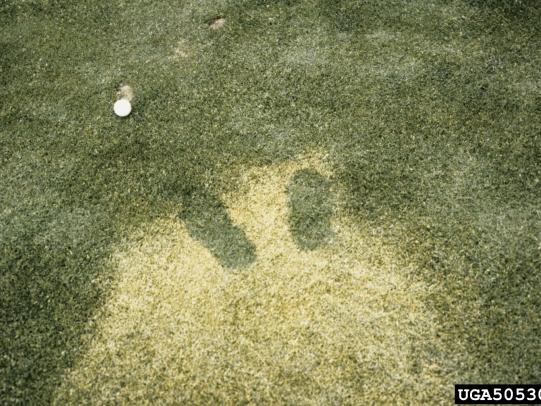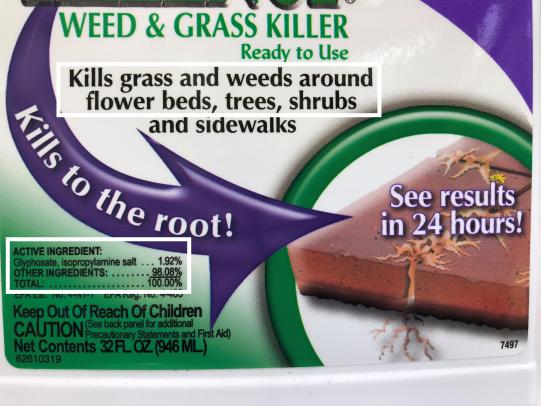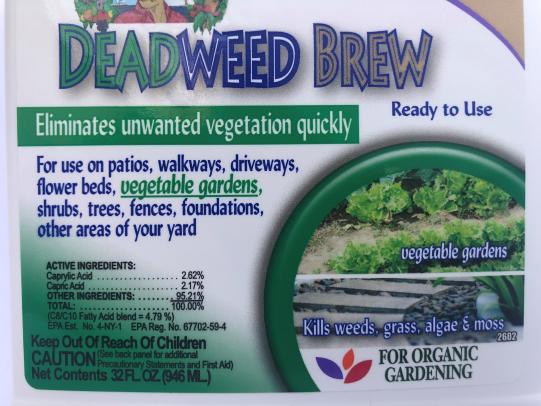UNDERSTANDING HERBICIDE LABELS TO PROTECT Non-target plants
The photo shows herbicide damage to a tree next to a lawn. Herbicides (weed killers) are chemical products designed to kill plants. They can damage non-target (desired) plants in situations described in this article.
To avoid damaging non-target plants with herbicides:
- Use information provided on product labels to understand the risks of a product to non-target plants.
- Follow the instructions to minimize risks. Following the instructions also helps you to maximize the benefits of the product.
Jump to
- Herbicide Damage to Trees & Shrubs (Bushes) Near Lawns
- Herbicide Damage from Vapor During Hot Weather
- Herbicide Damage to Lawns
- What Labels Say & What that Means for Non-target Plants
FOR QUESTIONS ABOUT PESTICIDES
The National Pesticide Information Center (NPIC) can answer questions about pest control chemicals.
1-800-858-7378 or npic@ace.orst.edu
2,4-D Herbicide & Similar Ingredients For Lawns
- Lawn-specific herbicide products with active ingredient 2,4-D and similar ingredients kill dandelion and other broadleaf (soft stems and leaves) weeds. They don’t damage lawns when used according to directions.
- Lawn-specific herbicide ingredients can also damage nearby desired plants if the roots extend into the lawn area.
- If tree or shrub (bush) roots extend under your lawn, avoid using products with 2,4-D in the root zone of the desired plants.
- Follow the label to avoid damaging the roots of trees and shrubs.
Weed & Feed (Herbicide & Fertilizer)
- Weed & feed products combine weed killers (herbicides) and fertilizer in the same package. They are meant for use on lawns. The photo (center) above shows an example weed & feed product label.
- Weed & feed products often contain the herbicide 2,4-D and/or similar ingredients as shown in the photo above (right).
- If tree or shrub (bush) roots extend under your lawn, avoid using weed & feed in the root zone of the desired plants.
Recommended methods for weeds in lawns near trees & shrubs
- Hand pull or spot-spray weeds as needed.
- Apply grass seed or lawn patch products to the areas where you dig up weeds.
2,4-D, triclopyr & Similar Ingredients
- Some herbicide products with 2,4-D and triclopyr (ester formulations) become a vapor when applied on hot days.
- High temperatures and low humidity increase vaporization (chemicals turn into gases).
- The vapor can damage nearby plants. Check the label for temperature limits.
Glyphosate & Other Non-selective Herbicides
- Herbicide products with the active ingredient glyphosate will damage most grasses and broadleaf plants. Don’t let spray get near plants you want to keep.
- Glyphosate is a non-selective herbicide. It kills most plants.
- Broad-spectrum herbicides are useful for areas such as patios, walkways, driveways, and fence lines.
- Some non-selective herbicides can even be used around fruits, vegetables, flowers, trees, and shrubs, but only if the label says so.
- Don’t let the spray contact plants you want to keep. They will get damaged by the herbicide.
Non-selective herbicide ingredients include:
- Glyphosate
- Imazapyr
- Diquat dibromide
- Contact herbicides will damage leaves and stems the spray directly contacts. Contact herbicides don’t kill the roots of plants they contact.
More About Organic Herbicides
- Organic herbicides are useful to kill seedlings of dandelion and other weeds. They don’t kill established dandelion plants in a single application. Follow the label instructions for best results.
- Organic herbicides are considered “contact” weed killers. They damage plant tissue directly contacted by the spray.
- Organic herbicides damage grasses in lawns. The grasses will turn yellow for a time, but they likely won’t die.
For Lawns
- Non-selective herbicides will damage grass and should not be used to spot-spray weeds in lawns unless you plan to reseed or apply lawn patch.
- Non-selective herbicides can be used for lawn renovations. See Practical Lawn Establishment and Renovation (OSU Extension Service).
- Many weed killers (herbicides) can be harmful to nearby non-target plants. Some will prevent plants from growing in treated areas for months.
- Look for DIRECTIONS FOR USE. They may be inside a booklet or pamphlet.
- Follow the instructions closely to minimize risks to non-target plants.
What the Label Says: “Do not use before planting lawns, flowers, or other plants because this product remains active in soil for up to one year.”
What That Means: This is often called a “plant-back restriction.” It means you cannot expect plants to thrive in treated areas until after a period of time has passed. These products are intended to be used in places where plants are not wanted, such as driveways.
What the Label Says: “Do not collect grass clippings for mulch or compost. Do not send clippings to a compost facility.”
What That Means: This is often called a “compost restriction.” It means the product may remain active, even after composting. People have damaged their gardens by using compost with traces of the active ingredients clopyralid and aminopyralid, in particular.
See Herbicide-Contaminated Compost and Soil Mix: What You Should Know — and What You Can Do About It (OSU Extension Service) for more information.
What the Label Says: “Under conditions which are conducive to evaporation (high temperatures and low humidity), vapors from this product may injure susceptible crops nearby.”
What That Means: Immediately after spraying, and even days later, this product can evaporate from treated surfaces. If the wind doesn’t blow the vapors away, they may hang in the air and damage nearby plants. Often, grapes, flowers, and vegetable plants are highly sensitive to the vapors.
What the Label Says: “Do not apply this product in areas where the roots of desirable plants may extend unless injury can be tolerated. Root zones can extend well beyond the tree canopy.”
What That Means: When attempting to control weeds, it’s possible to damage trees and shrubs. In La Pine, Oregon, several trees were killed after the first rains in October washed herbicide residue down from the surface to the trees’ root zones.
Content provided by Weston Miller and Kaci Buhl.
Peer reviewed by OSU Department of Horticulture.
Herbicides & non-target plants references
Plant Herbicide Symptoms
National Pesticide Information Center
Herbicide-Contaminated Compost and Soil Mix: What You Should Know — and What You Can Do About It
Oregon State University
